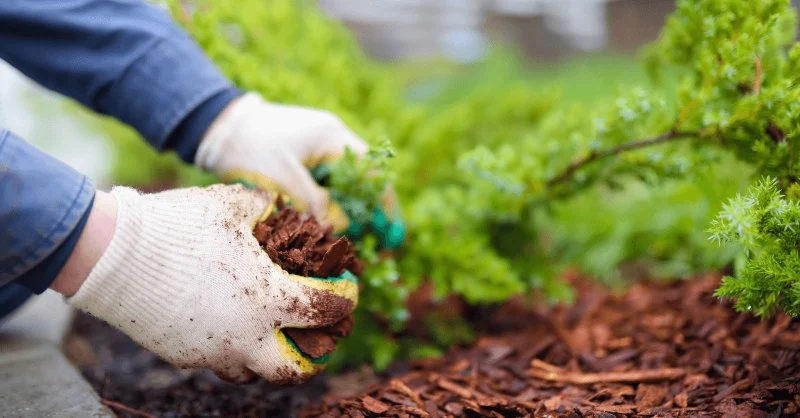
- 1-Introduction to Mulch and Its Importance
- 2-Understanding Mulch Colors
- 3-Choosing the Right Color Combinations for Your Garden
- 4-Tips for Applying Mulch in Your Garden
- 5-Real-Life Examples of Mulch Color Use in Landscaping
- 6-Final Thoughts on Using Mulch Colors
1-Introduction to Mulch and Its Importance
Mulch is an essential element of garden care, serving a multitude of purposes that go beyond aesthetics. It helps retain moisture, suppresses weeds, and regulates soil temperature. But mulch is also a powerful tool for enhancing the beauty of your garden, especially when paired with the right plantings. While most gardeners are aware of the benefits of mulch, they may not fully realize how different colors of mulch can enhance the look of their plants and the overall landscape. In this guide, we’ll explore how to choose the right mulch colors and apply them to elevate your garden’s visual appeal.
2-Understanding Mulch Colors
Mulch is available in a wide range of colors, each offering unique visual effects and complementing different types of plants. While the most common mulch colors are brown, black, and red, there are many other hues to choose from, such as gold, cedar, and pine. Understanding how each color interacts with plants is key to creating a harmonious and aesthetically pleasing garden.
1. Brown Mulch
Brown mulch is a popular choice for most gardens because it blends well with the natural environment. Its rich, earthy tones complement the green of most plants and trees, creating a soft, natural look. Brown mulch is especially effective in creating a rustic or traditional feel, making it ideal for gardens that feature native plants, shrubs, and flowers.
2. Black Mulch
Black mulch provides a striking contrast against vibrant flowers and plants. Its deep, dark color makes it an excellent choice for highlighting bright-colored flowers or plants with bold foliage. Black mulch is also great for modern or contemporary gardens, where a more polished, sleek look is desired. The darkness of black mulch can make your plants stand out even more and bring an air of sophistication to your garden design.
3. Red Mulch
Red mulch adds a bold, eye-catching element to your garden. Its vibrant color makes it a perfect choice for creating a focal point or emphasizing certain areas of your landscape. Red mulch works especially well with plants that have deep green, silver, or purple leaves, as the contrast enhances the colors of the foliage. However, red mulch may be best used sparingly, as it can overwhelm more subtle plantings.
4. Natural and Cedar Mulch
Natural or cedar mulch has a light, woody color that complements gardens with a more natural or woodland feel. This mulch is excellent for shaded or woodland gardens where you want to maintain a natural look while still providing the benefits of mulch. Cedar mulch also adds a pleasant fragrance to the garden, making it a great choice for sensory gardens.
3-Choosing the Right Color Combinations for Your Garden
To create a visually stunning landscape, it’s important to think about how mulch colors interact with the plants and the overall theme of your garden. Here are a few tips on combining mulch colors with plants:
1. Contrast With Plant Color
If you want to highlight certain plants, consider using a mulch color that contrasts with the plant's natural color. For instance, black mulch can make vibrant red, yellow, or purple flowers stand out. Similarly, red mulch can accentuate greenery, especially when used with bright-colored flowers.
2. Complement the Environment
If your garden is designed to blend seamlessly with the natural surroundings, you might opt for brown or natural-colored mulch. These colors mimic the appearance of forest floors or natural landscapes, making them ideal for gardens that aim for a more rustic or earthy look.
3. Consider Seasonal Changes
Different mulch colors can reflect the changing seasons. For example, brown and black mulches can complement autumn colors in your garden, while red mulch can be a vibrant addition in the summer months. Choose a mulch color that aligns with the seasonal look you want to achieve.
4-Tips for Applying Mulch in Your Garden
Once you’ve chosen the perfect mulch color for your garden, proper application is crucial to ensure it delivers both visual and practical benefits. Here are some tips for applying mulch effectively:
1. Apply Mulch in the Right Amount
Too little mulch won’t provide the desired effects, while too much can suffocate plant roots. Aim for about 2-4 inches of mulch around plants. This depth will help with moisture retention and weed control without causing harm to your plants.
2. Keep Mulch Away from Plant Stems
Make sure to keep mulch a few inches away from the stems or trunks of plants. Mulch that’s piled too high around stems can encourage rot and invite pests. Instead, spread the mulch evenly around the plant to create a natural, protective layer.
3. Refresh Mulch Regularly
Mulch can break down over time, so it’s important to refresh it regularly. Adding a new layer of mulch every year or as needed will help maintain its appearance and functionality. Be sure to remove any old mulch that has decomposed before applying fresh mulch.
5-Real-Life Examples of Mulch Color Use in Landscaping
Here are a few examples of how mulch colors have been used effectively in real landscapes:
1. A Modern Garden with Black Mulch
A homeowner in Chicago used black mulch to create a sleek, modern garden. By pairing black mulch with white and purple flowers, they achieved a stunning contrast that made the plants pop. The clean lines and dramatic color contrast gave the garden a contemporary and sophisticated feel.
2. A Natural Woodland Garden with Cedar Mulch
In a forested area in Oregon, a family used cedar mulch around their trees and ferns to enhance the natural beauty of the landscape. The light brown hue of the cedar mulch blended perfectly with the green foliage, helping to maintain the woodland aesthetic while providing excellent moisture retention.
6-Final Thoughts on Using Mulch Colors
Choosing the right mulch color is an important step in creating a visually appealing and healthy garden. By understanding how different colors interact with plants and the overall landscape design, you can enhance the beauty of your garden and improve its functionality. Remember to consider the type of plants you have, the environment around your garden, and the aesthetic you want to achieve when selecting a mulch color. For more tips and the best mulch products, visit Beautiful Landscapes, where you’ll find everything you need for your gardening projects!



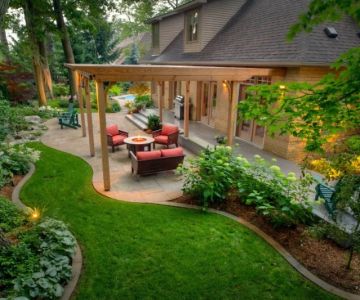


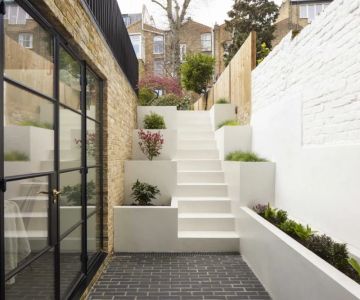

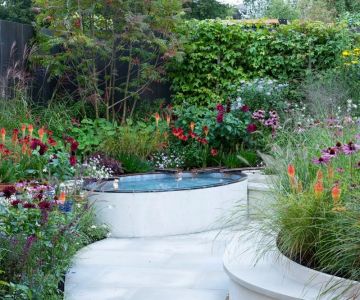
 Hittle Landscaping, Inc3.0 (132 reviews)
Hittle Landscaping, Inc3.0 (132 reviews) Corescapes4.0 (26 reviews)
Corescapes4.0 (26 reviews) SiteOne Landscape Supply4.0 (13 reviews)
SiteOne Landscape Supply4.0 (13 reviews) Quality Lawn Care by Nick Mayes4.0 (89 reviews)
Quality Lawn Care by Nick Mayes4.0 (89 reviews) ACHTENHAGEN SERVICES, INC4.0 (5 reviews)
ACHTENHAGEN SERVICES, INC4.0 (5 reviews) Noble County Lawn Care, LLC4.0 (13 reviews)
Noble County Lawn Care, LLC4.0 (13 reviews) How to Plan & Build a Backyard Fire Pit Area for Maximum Enjoyment
How to Plan & Build a Backyard Fire Pit Area for Maximum Enjoyment How to Convert a Lawn Into a Wildflower Meadow
How to Convert a Lawn Into a Wildflower Meadow How to Revive Dead Grass: A Complete Step-by-Step Guide to Lawn Care
How to Revive Dead Grass: A Complete Step-by-Step Guide to Lawn Care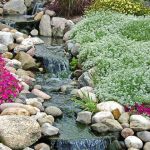 Best Ground Covers for Slopes & Erosion Control: Affordable and Effective Solutions
Best Ground Covers for Slopes & Erosion Control: Affordable and Effective Solutions How to Build a Sustainable Backyard Using Native Materials: A Step-by-Step Guide
How to Build a Sustainable Backyard Using Native Materials: A Step-by-Step Guide How to Use Mulch Colors to Enhance Plant Look and Garden Aesthetics
How to Use Mulch Colors to Enhance Plant Look and Garden Aesthetics